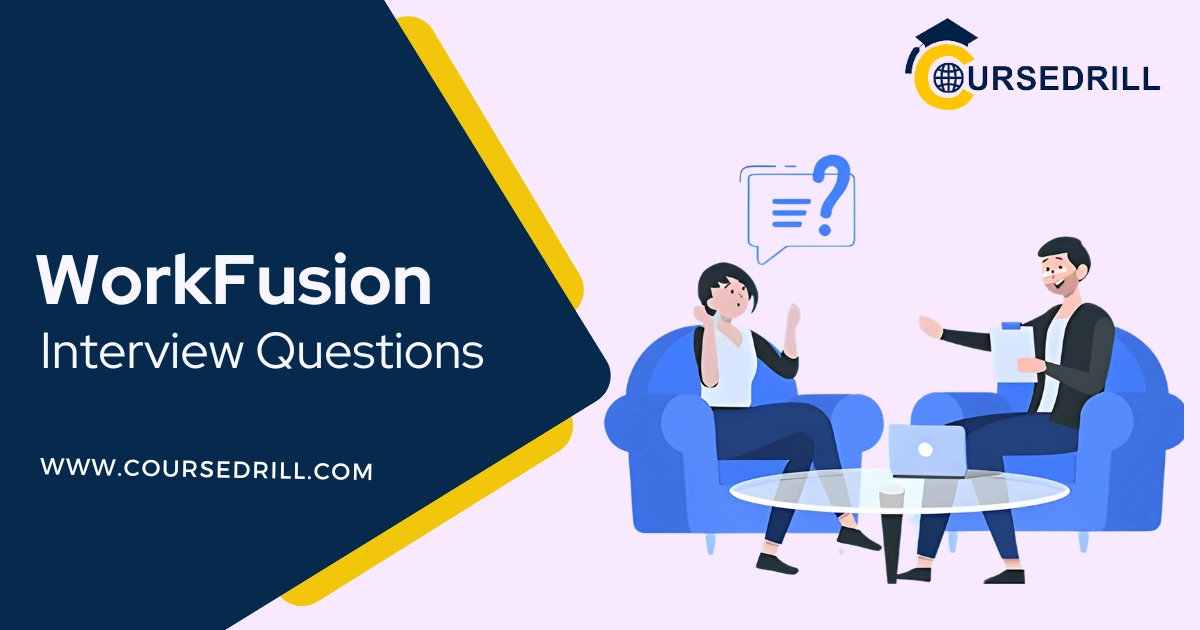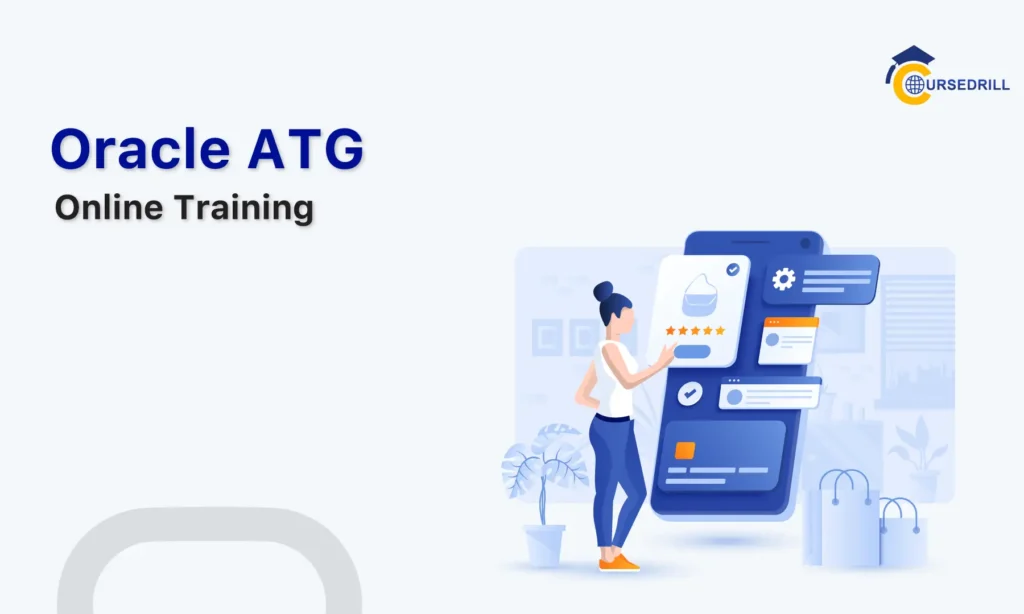- Posted on
- admin
- No Comments
Top 50 WorkFusion Interview Questions
I. RPA & Automation Fundamentals
1. What is Robotic Process Automation (RPA)?
Ans: RPA is a technology that uses software bots to mimic human actions to automate repetitive, rule-based tasks across various applications.
2. What are the key benefits of RPA implementation?
Ans: Increased efficiency, reduced costs, improved accuracy, enhanced employee morale, 24/7 availability, and faster processing times.
3. What are the different types of RPA bots?
Ans: Attended bots (require human interaction), Unattended bots (operate independently), and Hybrid bots (combine features of both).
4. Explain the concept of an RPA bot lifecycle.
Ans: Typically includes stages like development, testing, deployment, monitoring, and maintenance.
5. What are the key considerations for selecting RPA projects?
Ans: High-volume, repetitive tasks, rule-based processes, structured data, and minimal human intervention.
II. WorkFusion Specifics
6. What is WorkFusion platform and its key features?
Ans: A comprehensive intelligent automation platform that combines RPA, AI, and machine learning for various business processes. Key features include intelligent document processing, machine learning models, and a user-friendly interface.
7. How does WorkFusion utilize AI and machine learning?
Ans: This is for tasks like data extraction, classification, entity resolution, and predictive analytics to enhance automation capabilities.
8. Explain the concept of “Intelligent Automation” as per WorkFusion.
Ans: A combination of RPA with AI/ML technologies to automate complex, unstructured tasks with greater accuracy and adaptability.
9. What are the different components of the WorkFusion platform?
Ans: Designer (for bot development), Orchestrator (for bot management), and Insights (for performance monitoring and analytics).
10. How does WorkFusion ensure data security and compliance?
Ans: Through robust security measures, data encryption, access controls, and adherence to relevant industry standards.
III. Technical Skills
11. What programming languages are commonly used in RPA development?
Ans: Python, Java, .NET, and scripting languages like VB Script.
12. What are the different types of data structures used in RPA?
Ans: Arrays, lists, dictionaries, queues, and stacks.
13. Explain the concept of object recognition in RPA.
Ans: Bots can identify and interact with UI elements within applications.
14. What are the challenges in implementing RPA?
Ans: Process complexity, data quality issues, integration with legacy systems, and change management.
15. How do you handle exceptions and errors in RPA development?
Ans: Using error handling mechanisms like try-except blocks, exception logging, and retry mechanisms.
IV. Business Process Analysis
16. What is the importance of process mapping in RPA implementation?
Ans: To understand the current process flow, identify areas for automation, and optimize the process before RPA deployment.
17. What are the key steps involved in process discovery and analysis?
Ans: Interviews, document reviews, workshops, and process modeling techniques.
18. How do you identify potential risks and challenges during process analysis?
Ans: Through risk assessments, impact analysis, and stakeholder interviews.
19. What is the role of business analysts in RPA projects?
Ans: Understand business requirements, document processes, and ensure successful RPA implementation.
20. How do you ensure the scalability and maintainability of an RPA solution?
Ans: By following best practices in design, modularizing the code, and creating reusable components.
V. AI & Machine Learning Concepts
21. What is the difference between supervised and unsupervised learning?
Ans: Supervised learning involves labeled data, while unsupervised learning deals with unlabeled data.
22. Explain the concept of machine learning models and their types.
Ans: Algorithms that learn from data and make predictions. Common types include decision trees, neural networks, and support vector machines.
23. What is natural language processing (NLP) and how is it used in RPA?
Ans: The ability of computers to understand, interpret, and generate human language. Used for tasks like text extraction, sentiment analysis, and chatbots.
24. What is computer vision and how is it applied in RPA?
Ans: The ability of computers to “see” and interpret images or videos. Used for tasks like image recognition, document classification, and robotic process automation.
25. What are the ethical considerations related to AI and automation?
Ans: Job displacement, bias in algorithms, data privacy, and the responsible use of AI.
VI. WorkFusion Specifics (Advanced)
26. Explain the concept of WorkFusion’s Intelligent Document Processing (IDP) platform.
Ans: A platform for automating document-intensive tasks like data extraction, classification, and validation.
27. How does WorkFusion utilize machine learning for IDP?
Ans: To train models for document classification, data extraction, and entity recognition.
28. What are the different types of machine learning models used in WorkFusion IDP?
Ans: Computer vision models, natural language processing models, and other machine learning algorithms.
29. Explain the concept of “human-in-the-loop” in WorkFusion’s automation solutions.
Ans: Involves human oversight and intervention to review and validate bot outputs, ensuring accuracy and quality.
30. How does WorkFusion ensure the accuracy and quality of automated processes?
Ans: Through quality assurance checks, continuous monitoring, and feedback mechanisms.
VII. Project Management & Communication
31. What project management methodologies are commonly used in RPA projects?
Ans: Agile, Waterfall, and Scrum.
32. What are the key roles and responsibilities in an RPA project team?
Ans: Project Manager, Business Analyst, RPA Developer, Tester, and Subject Matter Expert.
33. How do you effectively communicate project progress and challenges to stakeholders?
Ans: Through regular status meetings, project reports, and dashboards.
34. How do you handle conflicts within an RPA project team?
Ans: Through open communication, active listening, and conflict resolution techniques.
35. What are the key performance indicators (KPIs) for measuring the success of an RPA project?
Ans: Cost savings, efficiency gains, error reduction, and customer satisfaction.
VIII. Testing & Quality Assurance
36. What are the different types of testing performed in RPA projects?
Ans: Unit testing, integration testing, system testing, and user acceptance testing.
37. What are the best practices for testing RPA bots?
Ans: Test data preparation, test case design, automated testing tools, and thorough regression testing.
38. How do you ensure the quality and accuracy of bot outputs?
Ans: Through rigorous testing, quality assurance checks, and continuous monitoring.
39. What are the common challenges in testing RPA solutions?
Ans: Data variability, environmental changes, and integration complexities.
40. How do you maintain and support RPA bots after deployment?
Ans: Through regular monitoring, maintenance activities, and addressing any issues that arise.
IX. Cloud Computing & Integration
41. What are the benefits of cloud-based RPA platforms like WorkFusion?
Ans: Scalability, flexibility, cost-effectiveness, and improved accessibility.
42. How does WorkFusion integrate with other enterprise systems?
Ans: Through APIs, connectors, and other integration methods.
43. What are the security considerations for cloud-based RPA deployments?
Ans: Data security, access control, and compliance with relevant regulations.
44. Explain the concept of microservices architecture in the context of RPA.
Ans: Breaking down large RPA processes into smaller, independent services for better scalability and maintainability.
45. How does WorkFusion leverage cloud technologies for its automation solutions?
Ans: To provide scalable infrastructure, high availability, and improved performance.
X. Future Trends & Innovation
46. What are the emerging trends in RPA and intelligent automation?
Ans: Hyperautomation, AI-powered RPA, cognitive automation, and the rise of intelligent process orchestration.
47. How will AI and machine learning further transform RPA in the future?
Ans: By enabling more complex and intelligent automation capabilities, such as self-learning bots and predictive
X. Future Trends & Innovation
48. How will AI and machine learning further transform RPA in the future?
Ans: By enabling more complex and intelligent automation capabilities, such as self-learning bots and predictive process optimization.
49. What is the role of citizen developers in the future of RPA?
Ans: Increased involvement of business users in the development and deployment of RPA solutions through low-code/no-code platforms.
50. How can organizations prepare for the future of work in the age of automation?
Ans: By investing in employee upskilling and reskilling programs, focusing on human-centric automation, and adapting to the changing demands of the workforce.
Popular Courses



